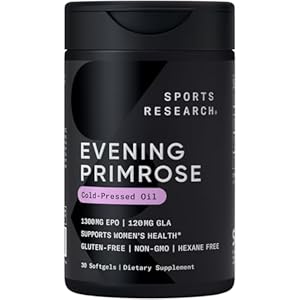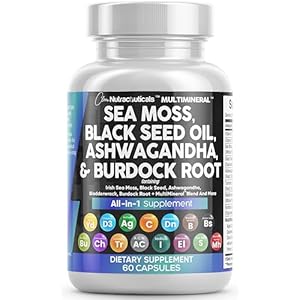
In that case, you don’t need to look very far to seek out claims about find out how to enhance—no, “optimize”—your well being.
Wish to reverse persistent illness? Lengthen that youthful glow? Reside to 115… or perpetually? Plenty of health influencers, authors, and podcasters will inform you find out how to do it.
On this infographic, we’ll discover.
By the top of it, you’ll have readability about find out how to get the well being and longevity you need, whereas residing a life you take pleasure in.
Dalton, Amy N., and Stephen A. Spiller. 2012. “Too Much of a Good Thing: The Benefits of Implementation Intentions Depend on the Number of Goals.” The Journal of Shopper Analysis 39 (3): 600–614.
Diener, Ed, and Micaela Y. Chan. 2011. “Happy People Live Longer: Subjective Well-Being Contributes to Health and Longevity.” Utilized Psychology. Well being and Properly-Being 3 (1): 1–43.
Suarez-Lledo, Victor, and Javier Alvarez-Galvez. 2021. “Prevalence of Health Misinformation on Social Media: Systematic Review.” Journal of Medical Web Analysis 23 (1): e17187.
Crawford, Cindy, Bharathi Avula, Andrea T. Lindsey, Abraham Walter, Kumar Katragunta, Ikhlas A. Khan, and Patricia A. Deuster. 2022. “Analysis of Select Dietary Supplement Products Marketed to Support or Boost the Immune System.” JAMA Community Open 5 (8): e2226040.
Crawford, Cindy, Courtney Boyd, Bharathi Avula, Yan-Hong Wang, Ikhlas A. Khan, and Patricia A. Deuster. 2020. “A Public Health Issue: Dietary Supplements Promoted for Brain Health and Cognitive Performance.” Journal of Various and Complementary Medication (New York, N.Y.) 26 (4): 265–72.
White, C. Michael. 2022. “Continued Risk of Dietary Supplements Adulterated with Approved and Unapproved Drugs: Assessment of the US Food and Drug Administration’s Tainted Supplements Database 2007 through 2021.” Journal of Medical Pharmacology 62 (8): 928–34.
Paffenbarger, R. S., Jr, R. T. Hyde, A. L. Wing, and C. C. Hsieh. 1986. “Physical Activity, All-Cause Mortality, and Longevity of College Alumni.” The New England Journal of Medication 314 (10): 605–13.
Watts, Eleanor L., Charles E. Matthews, Joshua R. Freeman, Jessica S. Gorzelitz, Hyokyoung G. Hong, Linda M. Liao, Kathleen M. McClain, Pedro F. Saint-Maurice, Eric J. Shiroma, and Steven C. Moore. 2022. “Association of Leisure Time Physical Activity Types and Risks of All-Cause, Cardiovascular, and Cancer Mortality among Older Adults.” JAMA Community Open 5 (8): e2228510.
Jayedi, Ahmad, Ali Gohari, and Sakineh Shab-Bidar. 2022. “Daily Step Count and All-Cause Mortality: A Dose-Response Meta-Analysis of Prospective Cohort Studies.” Sports activities Medication (Auckland, N.Z.) 52 (1): 89–99.
Del Pozo Cruz, Borja, Matthew Ahmadi, Sharon L. Naismith, and Emmanuel Stamatakis. 2022. “Association of Daily Step Count and Intensity with Incident Dementia in 78 430 Adults Living in the UK.” JAMA Neurology 79 (10): 1059–63.
Abou Sawan, Sidney; Nunes, Everson A.; Lim, Changhyun; McKendry, James; Phillips, Stuart M.. “The Health Benefits of Resistance Exercise: Beyond Hypertrophy and Big Weights.” Train, Sport, and Motion 1(1):e00001, Winter 2023.
“Falls.” n.d. Accessed Might 6, 2025. https://www.who.int/news-room/fact-sheets/detail/falls.
Sadaqa, Munseef, Zsanett Németh, Alexandra Makai, Viktória Prémusz, and Márta Hock. 2023. “Effectiveness of Exercise Interventions on Fall Prevention in Ambulatory Community-Dwelling Older Adults: A Systematic Review with Narrative Synthesis.” Frontiers in Public Well being 11 (August): 1209319.
Massini, Danilo A., Flávio H. Nedog, Thiago P. de Oliveira, Tiago A. F. Almeida, Caroline A. A. Santana, Cassiano M. Neiva, Anderson G. Macedo, et al. 2022. “The Effect of Resistance Training on Bone Mineral Density in Older Adults: A Systematic Review and Meta-Analysis.” Healthcare (Basel, Switzerland) 10 (6): 1129.
Park, Jung Ha, Ji Hyun Moon, Hyeon Ju Kim, Mi Hee Kong, and Yun Hwan Oh. 2020. “Sedentary Lifestyle: Overview of Updated Evidence of Potential Health Risks.” Korean Journal of Household Medication 41 (6): 365–73.
Zisko, Nina, Kjerstin Næss Skjerve, Atefe R. Tari, Silvana Bucher Sandbakk, Ulrik Wisløff, Bjarne M. Nes, and Javaid Nauman. 2017. “Personal Activity Intelligence (PAI), Sedentary Behavior and Cardiovascular Risk Factor Clustering – the HUNT Study.” Progress in Cardiovascular Illnesses 60 (1): 89–95.
“Train or Bodily Exercise.” 2024. September 25, 2024. https://www.cdc.gov/nchs/fastats/exercise.htm.
Carrard, Justin, Anne-Catherine Rigort, Christian Appenzeller-Herzog, Flora Colledge, Karsten Königstein, Timo Hinrichs, and Arno Schmidt-Trucksäss. 2022. “Diagnosing Overtraining Syndrome: A Scoping Review.” Sports activities Well being 14 (5): 665–73.
Weakley, Jonathon, Shona L. Halson, and Iñigo Mujika. 2022. “Overtraining Syndrome Symptoms and Diagnosis in Athletes: Where Is the Research? A Systematic Review.” Worldwide Journal of Sports activities Physiology and Efficiency 17 (5): 675–81.
Breuckmann, Frank, Stefan Möhlenkamp, Kai Nassenstein, Nils Lehmann, Susanne Ladd, Axel Schmermund, Burkhard Sievers, et al. 2009. “Myocardial Late Gadolinium Enhancement: Prevalence, Pattern, and Prognostic Relevance in Marathon Runners.” Radiology 251 (1): 50–57.
Wilson, M., R. O’Hanlon, S. Prasad, A. Deighan, P. Macmillan, D. Oxborough, R. Godfrey, et al. 2011. “Diverse Patterns of Myocardial Fibrosis in Lifelong, Veteran Endurance Athletes.” Journal of Utilized Physiology (Bethesda, Md.: 1985) 110 (6): 1622–26.
Möhlenkamp, Stefan, Nils Lehmann, Frank Breuckmann, Martina Bröcker-Preuss, Kai Nassenstein, Martin Halle, Thomas Budde, et al. 2008. “Running: The Risk of Coronary Events : Prevalence and Prognostic Relevance of Coronary Atherosclerosis in Marathon Runners.” European Coronary heart Journal 29 (15): 1903–10.
Müssigbrodt, A., A. Weber, J. Mandrola, Y. van Belle, S. Richter, M. Döring, A. Arya, P. Sommer, A. Bollmann, and G. Hindricks. 2017. “Excess of Exercise Increases the Risk of Atrial Fibrillation.” Scandinavian Journal of Medication & Science in Sports activities 27 (9): 910–17.
Eijsvogels, Thijs M. H., Paul D. Thompson, and Barry A. Franklin. 2018. “The ‘Extreme Exercise Hypothesis’: Recent Findings and Cardiovascular Health Implications.” Present Remedy Choices in Cardiovascular Medication 20 (10): 84.
Franklin, Barry A., and Scott Billecke. 2012. “Putting the Benefits and Risks of Aerobic Exercise in Perspective.” Present Sports activities Medication Experiences 11 (4): 201–8.
Oteng, Antwi-Boasiako, and Sander Kersten. 2020. “Mechanisms of Action of Trans Fatty Acids.” Advances in Vitamin 11 (3): 697–708.
Souza, Russell J. de, Andrew Mente, Adriana Maroleanu, Adrian I. Cozma, Vanessa Ha, Teruko Kishibe, Elizabeth Uleryk, et al. 2015. “Intake of Saturated and Trans Unsaturated Fatty Acids and Risk of All Cause Mortality, Cardiovascular Disease, and Type 2 Diabetes: Systematic Review and Meta-Analysis of Observational Studies.” BMJ 351 (August): h3978.
Dhaka, Vandana, Neelam Gulia, Kulveer Singh Ahlawat, and Bhupender Singh Khatkar. 2011. “Trans Fats-Sources, Health Risks and Alternative Approach – A Review.” Journal of Meals Science and Know-how 48 (5): 534–41.
Ortega, Miguel A., Óscar Fraile-Martínez, Cielo García-Montero, Miguel Angel Alvarez-Mon, Guillermo Lahera, Jorge Monserrat, Maria Llavero-Valero, et al. 2022. “Biological Role of Nutrients, Food and Dietary Patterns in the Prevention and Clinical Management of Major Depressive Disorder.” Vitamins 14 (15): 3099.
Piao, Jingjing, Yingwei Wang, Tianqi Zhang, Jiayu Zhao, Qianyu Lv, Mengyu Ruan, Qin Yu, and Bingjin Li. 2023. “Antidepressant-like Effects of Representative Types of Food and Their Possible Mechanisms.” Molecules (Basel, Switzerland) 28 (19): 6992.
Saghafian, Faezeh, Hanieh Malmir, Parvane Saneei, Alireza Milajerdi, Bagher Larijani, and Ahmad Esmaillzadeh. 2018. “Fruit and Vegetable Consumption and Risk of Depression: Accumulative Evidence from an Updated Systematic Review and Meta-Analysis of Epidemiological Studies.” The British Journal of Vitamin 119 (10): 1087–1101.
Juul, Filippa, Georgeta Vaidean, and Niyati Parekh. 2021. “Ultra-Processed Foods and Cardiovascular Diseases: Potential Mechanisms of Action.” Advances in Vitamin (Bethesda, Md.) 12 (5): 1673–80.
Du, Shutong, Valerie Ok. Sullivan, Michael Fang, Lawrence J. Appel, Elizabeth Selvin, and Casey M. Rebholz. 2024. “Ultra-Processed Food Consumption and Risk of Diabetes: Results from a Population-Based Prospective Cohort.” Diabetologia 67 (10): 2225–35.
Kliemann, Nathalie, Fernanda Rauber, Renata Bertazzi Levy, Vivian Viallon, Eszter P. Vamos, Reynalda Cordova, Heinz Freisling, et al. 2023. “Food Processing and Cancer Risk in Europe: Results from the Prospective EPIC Cohort Study.” The Lancet. Planetary Well being 7 (3): e219–32.
Fadnes, Lars T., Carlos Celis-Morales, Jan-Magnus Økland, Solange Parra-Soto, Katherine M. Livingstone, Frederick Ok. Ho, Jill P. Pell, et al. 2023. “Life Expectancy Can Increase by up to 10 Years Following Sustained Shifts towards Healthier Diets in the United Kingdom.” Nature Meals 4 (11): 961–65.
Lane, Melissa M., Elizabeth Gamage, Shutong Du, Deborah N. Ashtree, Amelia J. McGuinness, Sarah Gauci, Phillip Baker, et al. 2024. “Ultra-Processed Food Exposure and Adverse Health Outcomes: Umbrella Review of Epidemiological Meta-Analyses.” BMJ (Medical Analysis Ed.) 384 (February): e077310.
Rico-Campà, Anaïs, Miguel A. Martínez-González, Ismael Alvarez-Alvarez, Raquel de Deus Mendonça, Carmen de la Fuente-Arrillaga, Clara Gómez-Donoso, and Maira Bes-Rastrollo. 2019. “Association between Consumption of Ultra-Processed Foods and All Cause Mortality: SUN Prospective Cohort Study.” BMJ (Medical Analysis Ed.) 365 (Might): l1949.
Wolfson, Julia A., Anna Claire Tucker, Cindy W. Leung, Casey M. Rebholz, Vanessa Garcia-Larsen, and Euridice Martinez-Steele. 2025. “Trends in Adults’ Intake of Un-Processed/Minimally Processed, and Ultra-Processed Foods at Home and Away from Home in the United States from 2003-2018.” The Journal of Vitamin 155 (1): 280–92.
Wang, Dong D., Yanping Li, Shilpa N. Bhupathiraju, Bernard A. Rosner, Qi Solar, Edward L. Giovannucci, Eric B. Rimm, et al. 2021. “Fruit and Vegetable Intake and Mortality.” Circulation 143 (17): 1642–54.
Boeing, Heiner, Angela Bechthold, Achim Bub, Sabine Ellinger, Dirk Haller, Anja Kroke, Eva Leschik-Bonnet, et al. 2012. “Critical Review: Vegetables and Fruit in the Prevention of Chronic Diseases.” European Journal of Vitamin 51 (6): 637–63.
N.d. Accessed Might 2, 2025. https://odphp.health.gov/sites/default/files/2019-09/2015-2020_Dietary_Guidelines.pdf.
Lee-Kwan, Seung Hee, Latetia V. Moore, Heidi M. Blanck, Diane M. Harris, and Deb Galuska. 2017. “Disparities in State-Specific Adult Fruit and Vegetable Consumption – United States, 2015.” MMWR. Morbidity and Mortality Weekly Report 66 (45): 1241–47.
Naghshi, Sina, Omid Sadeghi, Walter C. Willett, and Ahmad Esmaillzadeh. 2020. “Dietary Intake of Total, Animal, and Plant Proteins and Risk of All Cause, Cardiovascular, and Cancer Mortality: Systematic Review and Dose-Response Meta-Analysis of Prospective Cohort Studies.” BMJ (Medical Analysis Ed.) 370 (July): m2412.
Haghighatdoost, Fahimeh, Noushin Mohammadifard, Parisa Zakeri, Jamshid Najafian, Masoumeh Sadeghi, Hamidreza Roohafza, and Nizal Sarrafzadegan. 2023. “Differences in All-Cause Mortality Risk Associated with Animal and Plant Dietary Protein Sources Consumption.” Scientific Experiences 13 (1): 3396.
Chen, Zhangling, Marija Glisic, Mingyang Music, Hamid A. Aliahmad, Xiaofang Zhang, Alice C. Moumdjian, Valentina Gonzalez-Jaramillo, et al. 2020. “Dietary Protein Intake and All-Cause and Cause-Specific Mortality: Results from the Rotterdam Study and a Meta-Analysis of Prospective Cohort Studies.” European Journal of Epidemiology 35 (5): 411–29.
N.d. Accessed Might 2, 2025. https://www.aicr.org/cancer-prevention/recommendations/limit-consumption-of-red-and-processed-meat/#what-the-science-says.
“Most cancers: Carcinogenicity of the Consumption of Pink Meat and Processed Meat.” n.d. Accessed Might 2, 2025. https://www.who.int/news-room/questions-and-answers/item/cancer-carcinogenicity-of-the-consumption-of-red-meat-and-processed-meat.
Li, Chunxiao, Tom R. P. Bishop, Fumiaki Imamura, Stephen J. Sharp, Matthew Pearce, Soren Brage, Ken Ok. Ong, et al. 2024. “Meat Consumption and Incident Type 2 Diabetes: An Individual-Participant Federated Meta-Analysis of 1·97 Million Adults with 100 000 Incident Cases from 31 Cohorts in 20 Countries.” The Lancet. Diabetes & Endocrinology 12 (9): 619–30.
Phillips, Stuart M., Stéphanie Chevalier, and Heather J. Leidy. 2016. “Protein ‘Requirements’ beyond the RDA: Implications for Optimizing Health.” Utilized Physiology Vitamin and Metabolism 41 (5): 565–72.
Houston, Denise Ok., Barbara J. Nicklas, Jingzhong Ding, Tamara B. Harris, Frances A. Tylavsky, Anne B. Newman, Jung Solar Lee, et al. 2008. “Dietary Protein Intake Is Associated with Lean Mass Change in Older, Community-Dwelling Adults: The Health, Aging, and Body Composition (Health ABC) Study.” The American Journal of Medical Vitamin 87 (1): 150–55.
Hengeveld, Linda M., Jolanda M. A. Boer, Pierrette Gaudreau, Martijn W. Heymans, Carol Jagger, Nuno Mendonça, Marga C. Ocké, et al. 2020. “Prevalence of Protein Intake below Recommended in Community-Dwelling Older Adults: A Meta-Analysis across Cohorts from the PROMISS Consortium.” Journal of Cachexia, Sarcopenia and Muscle 11 (5): 1212–22.
Bischoff-Ferrari, Heike A., Stephanie Gängler, Maud Wieczorek, Daniel W. Belsky, Joanne Ryan, Reto W. Kressig, Hannes B. Stähelin, et al. 2025. “Individual and Additive Effects of Vitamin D, Omega-3 and Exercise on DNA Methylation Clocks of Biological Aging in Older Adults from the DO-HEALTH Trial.” Nature Ageing 5 (3): 376–85.
Navarro, Victor J., Ikhlas Khan, Einar Björnsson, Leonard B. Seeff, Jose Serrano, and Jay H. Hoofnagle. 2017. “Liver Injury from Herbal and Dietary Supplements.” Hepatology (Baltimore, Md.) 65 (1): 363–73.
Li, H., F. Qian, L. Han, W. Feng, D. Zheng, X. Guo, and H. Zhang. 2024. “Association of Healthy Sleep Patterns with Risk of Mortality and Life Expectancy at Age of 30 Years: A Population-Based Cohort Study.” QJM: Month-to-month Journal of the Affiliation of Physicians 117 (3): 177–86.
Makarem, Nour, Cecilia Castro-Diehl, Marie-Pierre St-Onge, Susan Redline, Steven Shea, Donald Lloyd-Jones, Hongyan Ning, and Brooke Aggarwal. 2022. “Redefining Cardiovascular Health to Include Sleep: Prospective Associations with Cardiovascular Disease in the MESA Sleep Study.” Journal of the American Coronary heart Affiliation 11 (21): e025252.
Chaput, Jean-Philippe, Caroline Dutil, Ryan Featherstone, Robert Ross, Lora Giangregorio, Travis J. Saunders, Ian Janssen, et al. 2020. “Sleep Duration and Health in Adults: An Overview of Systematic Reviews.” Utilized Physiology Vitamin and Metabolism 45 (10 (Suppl. 2)): S218–31.
Winer, Joseph R., Kacie D. Deters, Gabriel Kennedy, Meghan Jin, Andrea Goldstein-Piekarski, Kathleen L. Poston, and Elizabeth C. Mormino. 2021. “Association of Short and Long Sleep Duration with Amyloid-β Burden and Cognition in Aging.” JAMA Neurology 78 (10): 1187–96.
“Sleep Well being.” 2023. December 27, 2023. https://www.cdc.gov/nchs/fastats/sleep-health.htm.
Han, Han, Ying Wang, Tongtong Li, Chengwu Feng, Catherine Kaliszewski, Yang Su, Yinfan Wu, Jian Zhou, Liang Wang, and Geng Zong. 2023. “Sleep Duration and Risks of Incident Cardiovascular Disease and Mortality among People with Type 2 Diabetes.” Diabetes Care 46 (1): 101–10.
Wang, Yafeng, Wentao Huang, Adrienne O’Neil, Yutao Lan, Dagfinn Aune, Wei Wang, Chuanhua Yu, and Xiong Chen. 2020. “Association between Sleep Duration and Mortality Risk among Adults with Type 2 Diabetes: A Prospective Cohort Study.” Diabetologia 63 (11): 2292–2304.
Jike, Maki, Osamu Itani, Norio Watanabe, Daniel J. Buysse, and Yoshitaka Kaneita. 2018. “Long Sleep Duration and Health Outcomes: A Systematic Review, Meta-Analysis and Meta-Regression.” Sleep Medication Evaluations 39 (June): 25–36.
Satyjeet, Fnu, Sidra Naz, Vinesh Kumar, Norah H. Aung, Kanwal Bansari, Sana Irfan, and Amber Rizwan. 2020. “Psychological Stress as a Risk Factor for Cardiovascular Disease: A Case-Control Study.” Cureus 12 (10): e10757.
Vaccarino, Viola, and J. Douglas Bremner. 2024. “Stress and Cardiovascular Disease: An Update.” Nature Evaluations. Cardiology 21 (9): 603–16.
Ebstrup, Jeanette Frost, and Torben Jørgensen. 2012. “Stress and cardiovascular disease.” Ugeskrift for laeger 174 (4): 204–7.
Schneiderman, Neil, Gail Ironson, and Scott D. Siegel. 2005. “Stress and Health: Psychological, Behavioral, and Biological Determinants.” Annual Evaluate of Medical Psychology 1 (1): 607–28.
N.d. Accessed Might 2, 2025. https://www.apa.org/news/press/releases/2021/03/one-year-pandemic-stress#:~:text=Nearly.
Neff, Kristin D. 2023. “Self-Compassion: Theory, Method, Research, and Intervention.” Annual Evaluate of Psychology 74 (1): 193–218.
Dweck CS. Mindset: The New Psychology of Success. Random Home Publishing Group; 2006.
Jamieson, Jeremy P., Alia J. Crum, J. Parker Goyer, Marisa E. Marotta, and Modupe Akinola. 2018. “Optimizing Stress Responses with Reappraisal and Mindset Interventions: An Integrated Model.” Nervousness, Stress, and Coping 31 (3): 245–61.
N.d. Accessed Might 2, 2025. https://www.apa.org/news/press/releases/stress/2022/concerned-future-inflation.
Authorities of Canada, and Statistics Canada. 2023. “Perceived Life Stress, by Age Group.” Authorities of Canada, Statistics Canada. https://www150.statcan.gc.ca/t1/tbl1/en/tv.action?pid=1310009604.
N.d. Accessed Might 2, 2025. https://www.apa.org/news/press/releases/stress/2023/collective-trauma-recovery.
N.d. Accessed Might 2, 2025. https://nap.nationalacademies.org/catalog/25663/social-isolation-and-loneliness-in-older-adults-opportunities-for-the.
Reblin, Maija, and Bert N. Uchino. 2008. “Social and Emotional Support and Its Implication for Health.” Present Opinion in Psychiatry 21 (2): 201–5.
Holt-Lunstad, Julianne, Timothy B. Smith, and J. Bradley Layton. 2010. “Social Relationships and Mortality Risk: A Meta-Analytic Review.” PLoS Medication 7 (7): e1000316.
“Harvard Second Technology Examine.” n.d. Harvardstudy. Accessed Might 2, 2025. https://www.adultdevelopmentstudy.org/.
CDC. 2025. “Well being Results of Social Isolation and Loneliness.” Social Connection. February 3, 2025. https://www.cdc.gov/social-connectedness/risk-factors/.
“Loneliness Linked to Dementia Threat in Massive-Scale Evaluation.” n.d. Nationwide Institute on Ageing. Accessed Might 2, 2025. https://www.nia.nih.gov/news/loneliness-linked-dementia-risk-large-scale-analysis.
Holt-Lunstad, Julianne. 2024. “Social Connection as a Critical Factor for Mental and Physical Health: Evidence, Trends, Challenges, and Future Implications.” World Psychiatry: Official Journal of the World Psychiatric Affiliation (WPA) 23 (3): 312–32.
N.d. Accessed Might 2, 2025. https://www.hhs.gov/sites/default/files/surgeon-general-social-connection-advisory.pdf.
Goddard, Isabel. 2023. “What Does Friendship Appear like in America?” Pew Analysis Middle. October 12, 2023. https://www.pewresearch.org/short-reads/2023/10/12/what-does-friendship-look-like-in-america/.
Martino, Jessica, Jennifer Pegg, and Elizabeth Pegg Frates. 2017. “The Connection Prescription: Using the Power of Social Interactions and the Deep Desire for Connectedness to Empower Health and Wellness.” American Journal of Life-style Medication 11 (6): 466–75.
Kang, Weixi. 2023. “Understanding the Associations between the Number of Close Friends and Life Satisfaction: Considering Age Differences.” Frontiers in Psychology 14 (March): 1105771.
Dunbar, Robin. 2011. “How Many ‘Friends’ Can You Really Have?” IEEE Spectrum 48 (6): 81–83.
Steptoe, Andrew, Aparna Shankar, Panayotes Demakakos, and Jane Wardle. 2013. “Social Isolation, Loneliness, and All-Cause Mortality in Older Men and Women.” Proceedings of the Nationwide Academy of Sciences of america of America 110 (15): 5797–5801.
Falci, Christina & McNeely, Clea. (2009). “Too Many Friends: Social Integration, Network Cohesion and Adolescent Depressive Symptoms.” Social Forces – SOC FORCES. 87. 10.1353/sof.0.0189.
Stavrova, Olga, and Dongning Ren. 2021. “Is More Always Better? Examining the Nonlinear Association of Social Contact Frequency with Physical Health and Longevity.” Social Psychological and Character Science 12 (6): 1058–70.
Leikas, Sointu, and Ville-Juhani Ilmarinen. 2017. “Happy Now, Tired Later? Extraverted and Conscientious Behavior Are Related to Immediate Mood Gains, but to Later Fatigue.” Journal of Character 85 (5): 603–15.
“Cigarette Smoking and Digital Cigarette Use.” 2024. September 4, 2024. https://www.cdc.gov/nchs/fastats/smoking.htm.
N.d. Accessed Might 2, 2025. https://ourworldindata.org/smoking.
“Tobacco.” n.d. Accessed Might 2, 2025. https://www.who.int/news-room/fact-sheets/detail/tobacco.
US Burden of Illness Collaborators, Ali H. Mokdad, Katherine Ballestros, Michelle Echko, Scott Glenn, Helen E. Olsen, Erin Mullany, et al. 2018. “The State of US Health, 1990-2016: Burden of Diseases, Injuries, and Risk Factors among US States.” JAMA: The Journal of the American Medical Affiliation 319 (14): 1444–72.
Nationwide Middle for Persistent Illness Prevention and Well being Promotion (US) Workplace on Smoking and Well being. 2014. The Health Consequences of Smoking—50 Years of Progress: A Report of the Surgeon General. Atlanta (GA): Facilities for Illness Management and Prevention (US).
Manuello, Jordi, Joosung Min, Paul McCarthy, Fidel Alfaro-Almagro, Soojin Lee, Stephen Smith, Lloyd T. Elliott, Anderson M. Winkler, and Gwenaëlle Douaud. 2024. “The Effects of Genetic and Modifiable Risk Factors on Brain Regions Vulnerable to Ageing and Disease.” Nature Communications 15 (1): 2576.
Livingston, Gill, Jonathan Huntley, Andrew Sommerlad, David Ames, Clive Ballard, Sube Banerjee, Carol Brayne, et al. 2020. “Dementia Prevention, Intervention, and Care: 2020 Report of the Lancet Commission.” Lancet 396 (10248): 413–46.
“Alcohol.” n.d. Accessed Might 2, 2025. https://www.who.int/news-room/fact-sheets/detail/alcohol.
GBD 2016 Alcohol Collaborators. 2018. “Alcohol Use and Burden for 195 Countries and Territories, 1990-2016: A Systematic Analysis for the Global Burden of Disease Study 2016.” Lancet 392 (10152): 1015–35.
N.d. Accessed Might 2, 2025. https://www.dietaryguidelines.gov/alcohol/info.
“Surveillance Report #120.” n.d. Accessed Might 2, 2025. https://www.niaaa.nih.gov/publications/surveillance-reports/surveillance120.
Livingston, Michael, and Sarah Callinan. 2015. “Underreporting in Alcohol Surveys: Whose Drinking Is Underestimated?” Journal of Research on Alcohol and Medication 76 (1): 158–64.
Boniface, Sadie, James Kneale, and Nicola Shelton. 2014. “Drinking Pattern Is More Strongly Associated with Under-Reporting of Alcohol Consumption than Socio-Demographic Factors: Evidence from a Mixed-Methods Study.” BMC Public Well being 14 (1): 1297.
N.d. Accessed Might 2, 2025. https://ourworldindata.org/alcohol-consumption.
Spencer, Merianne Rose, Sally C. Curtin, and Holly Hedegaard. 2020. “Rates of Alcohol-Induced Deaths among Adults Aged 25 and over in Urban and Rural Areas: United States, 2000-2018.” NCHS Information Transient, no. 383 (October): 1–8.
“No Degree of Alcohol Consumption Is Protected for Our Well being.” n.d. Accessed Might 2, 2025. https://www.who.int/europe/news/item/04-01-2023-no-level-of-alcohol-consumption-is-safe-for-our-health.
Biddinger KJ, Emdin CA, Haas ME, et al. “Association of Habitual Alcohol Intake With Risk of Cardiovascular Disease.” JAMA Netw Open. 2022;5(3):e223849.
Kahane, Work by Charles. n.d. “Lives Saved by Car Security Applied sciences 1960 to 2012.” Accessed Might 2, 2025. https://www.nhtsa.gov/sites/nhtsa.gov/files/2015sae-kindelberger-livessaved.pdf.
Inexperienced, A., G. Williams, R. Neale, V. Hart, D. Leslie, P. Parsons, G. C. Marks, et al. 1999. “Daily Sunscreen Application and Betacarotene Supplementation in Prevention of Basal-Cell and Squamous-Cell Carcinomas of the Skin: A Randomised Controlled Trial.” Lancet 354 (9180): 723–29.
Inexperienced, Adèle C., Gail M. Williams, Valerie Logan, and Geoffrey M. Strutton. 2011. “Reduced Melanoma after Regular Sunscreen Use: Randomized Trial Follow-Up.” Journal of Medical Oncology: Official Journal of the American Society of Medical Oncology 29 (3): 257–63.
Tan, Yunfei, Lili Fang, Yichen Zhu, and Kenji Hashimoto. 2024. “Relationship between Hearing Loss and Depression: A Cross-Sectional Analysis from the National Health and Nutrition Examination Survey 2015-2018.” Journal of Psychiatric Analysis 178 (October): 1–7.
Bigelow, Robin T., Nicholas S. Reed, Katharine Ok. Brewster, Alison Huang, George Rebok, Bret R. Rutherford, and Frank R. Lin. 2020. “Association of Hearing Loss with Psychological Distress and Utilization of Mental Health Services among Adults in the United States.” JAMA Community Open 3 (7): e2010986.
Wang, Hui-Fu, Wei Zhang, Edmund T. Rolls, Alzheimer’s Illness Neuroimaging Initiative, Yuzhu Li, Linbo Wang, Ya-Hui Ma, et al. 2022. “Hearing Impairment Is Associated with Cognitive Decline, Brain Atrophy and Tau Pathology.” EBioMedicine 86 (104336): 104336.
Huang, Alison R., Kening Jiang, Frank R. Lin, Jennifer A. Deal, and Nicholas S. Reed. 2023. “Hearing Loss and Dementia Prevalence in Older Adults in the US.” JAMA: The Journal of the American Medical Affiliation 329 (2): 171–73.
Hung, Shih-Chang, Kuan-Fu Liao, Chih-Hsin Muo, Shih-Wei Lai, Chia-Wei Chang, and Hung-Chang Hung. 2015. “Hearing Loss Is Associated with Risk of Alzheimer’s Disease: A Case-Control Study in Older People.” Journal of Epidemiology 25 (8): 517–21.
Campos, Laura, Allan Prochazka, Melinda Anderson, Alexander Kaizer, Carol Foster, and Timothy Hullar. 2023. “Consistent Hearing Aid Use Is Associated with Lower Fall Prevalence and Risk in Older Adults with Hearing Loss.” Journal of the American Geriatrics Society 71 (10): 3163–71.
Riska, Kristal M., Sarah B. Peskoe, Maragatha Kuchibhatla, Alexander Gordee, Juliessa M. Pavon, Se Eun Kim, Jessica S. West, and Sherri L. Smith. 2022. “Impact of Hearing Aid Use on Falls and Falls-Related Injury: Results from the Health and Retirement Study.” Ear and Listening to 43 (2): 487–94.
N.d. Accessed Might 2, 2025. https://injuryfacts.nsc.org/motor-vehicle/occupant-protection/seat-belts/.
Fleming, Eleanor B., Duong Nguyen, Joseph Afful, Margaret D. Carroll, and Phillip D. Woods. 2018. “Prevalence of Daily Flossing among Adults by Selected Risk Factors for Periodontal Disease-United States, 2011-2014.” Journal of Periodontology 89 (8): 933–39.
Olsson, Bjørn. 2023. “Increased Bicycle Helmet Use in the Absence of Mandatory Bicycle Helmet Legislation: Prevalence and Trends from Longitudinal Observational Studies on the Use of Bicycle Helmets among Cyclists in Denmark 2004-2022.” Journal of Security Analysis 87 (December): 54–63.
Bonyun, Marissa, Andi Camden, Colin Macarthur, and Andrew Howard. 2012. “Helmet Use in BIXI Cyclists in Toronto, Canada: An Observational Study.” BMJ Open 2 (3): e001049.
Shool, Sina, Seyed Mohammad Piri, Zahra Ghodsi, Reza Tabrizi, Mohammad Hosein Amirzade-Iranaq, Mahdieh Mashayekhi, Mohammad Amin Dabbagh Ohadi, et al. 2024. “The Prevalence of Helmet Use in Motorcyclists around the World: A Systematic Review and Meta-Analysis of 5,006,476 Participants.” Worldwide Journal of Harm Management and Security Promotion 31 (3): 431–69.
Waltzman, Dana, Kelly Sarmiento, Xinjian Zhang, and Gabrielle F. Miller. 2023. “Estimated Prevalence of Helmet Use While Bicycling, Rollerblading, and Skateboarding among Middle School Students in Selected U.S. States- Youth Behavior Risk Survey, 2013-2019.” Journal of Security Analysis 87 (December): 367–74.
Livingston, Gill, Jonathan Huntley, Andrew Sommerlad, David Ames, Clive Ballard, Sube Banerjee, Carol Brayne, et al. 2020. “Dementia Prevention, Intervention, and Care: 2020 Report of the Lancet Commission.” Lancet 396 (10248): 413–46.
Kim, Eric S., Ying Chen, Julia S. Nakamura, Carol D. Ryff, and Tyler J. VanderWeele. 2022. “Sense of Purpose in Life and Subsequent Physical, Behavioral, and Psychosocial Health: An Outcome-Wide Approach.” American Journal of Well being Promotion: AJHP 36 (1): 137–47.
You possibly can assist folks construct sustainable diet and life-style habits that can considerably enhance their bodily and psychological well being—whilst you make a fantastic residing doing what you’re keen on. We’ll present you the way.
Trending Merchandise











